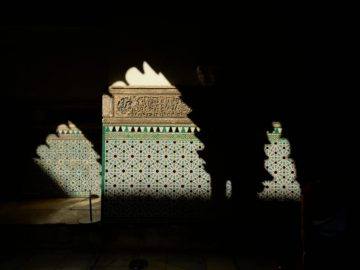Aatish Taseer in The New York Times:
 ON A MORNING of haunting heat in Seville, I sought out the tomb of Ferdinand III. There, in the Gothic cool, older Spaniards came and went, dropping to one knee and crossing themselves before the sepulcher of the Castilian monarch. There were men in staid tucked-in shirts, gray checked with yellow, and women with short-cropped hair and knee-length dresses, slim belts around their waists. They sat in pews under a coffered ceiling, dourly communing with El Santo, the patron saint of what would come to be called La Reconquista — the man under whom five and a half centuries of Muslim rule had in 1248 come to an end in this town: Seville, or Ishbiliya, as it was known then.
ON A MORNING of haunting heat in Seville, I sought out the tomb of Ferdinand III. There, in the Gothic cool, older Spaniards came and went, dropping to one knee and crossing themselves before the sepulcher of the Castilian monarch. There were men in staid tucked-in shirts, gray checked with yellow, and women with short-cropped hair and knee-length dresses, slim belts around their waists. They sat in pews under a coffered ceiling, dourly communing with El Santo, the patron saint of what would come to be called La Reconquista — the man under whom five and a half centuries of Muslim rule had in 1248 come to an end in this town: Seville, or Ishbiliya, as it was known then.
On a banner above the altar, silver letters against a crimson ground read, “Per Me Reges Regnant” (“By Me, Kings Reign”). The Virgin of Kings, dressed in orchid pink, gazed down at this scene of historical piety. Black-haired putti, prying and vaguely deviant, swarmed around her. The organ played. Latin chants filled the ribbed recesses of the largest Gothic church in Christendom, which retained as its belfry the fabled minaret (La Giralda, or “weather vane”) of the 12th-century mosque on whose bones it had been built.
More here.
